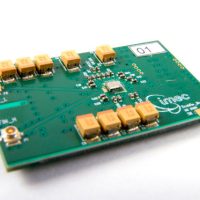In the realm of technological advancements, Artificial Intelligence (AI) has emerged as a game-changer. However, a new player has entered the scene, known as Generative AI. While both terms may sound similar, they possess distinct characteristics and applications. This article aims to unravel the differences between AI and Generative AI, shedding light on their unique features, functionalities, and potential implications.
1. Understanding Artificial Intelligence (AI):
AI refers to the simulation of human intelligence in machines that are programmed to think and learn like humans. It encompasses a wide range of technologies, including machine learning, natural language processing, and computer vision. AI systems analyze vast amounts of data, recognize patterns, and make decisions or predictions based on the acquired knowledge.
2. Exploring Generative AI:
Generative AI, on the other hand, takes AI a step further by enabling machines to create new and original content. It leverages deep learning techniques, such as generative adversarial networks (GANs), to generate realistic and coherent outputs, including images, music, and even text. Generative AI models learn from existing data and generate new content that closely resembles the input data, often surpassing human capabilities in creativity.
3. Key Differences:
3.1. Objective:
AI primarily focuses on problem-solving, decision-making, and automation. It aims to enhance efficiency, accuracy, and productivity across various industries. In contrast, Generative AI emphasizes creativity, innovation, and the production of novel content.
3.2. Data Utilization:
AI relies on extensive datasets to train models and make informed decisions. It analyzes historical data patterns to predict future outcomes or provide recommendations. Generative AI, however, uses existing data to generate new content that is not explicitly present in the training dataset. It excels in creating original and imaginative outputs.
3.3. Applications:
AI finds applications in diverse fields, such as healthcare, finance, and manufacturing. It streamlines processes, detects anomalies, and assists in complex decision-making. Generative AI, on the other hand, is predominantly used in creative industries like art, music, and design. It aids in generating unique content, pushing the boundaries of human imagination.
4. Implications and Challenges:
4.1. Ethical Considerations:
As AI and Generative AI continue to evolve, ethical concerns arise. AI raises questions about privacy, bias, and job displacement. Generative AI introduces challenges related to copyright infringement, authenticity, and the potential misuse of generated content.
4.2. Human-AI Collaboration:
While AI augments human capabilities, Generative AI blurs the line between human and machine creativity. Collaborative efforts between humans and AI systems can lead to groundbreaking innovations, but it is crucial to maintain human control and ensure responsible use of technology.
4.3. Advancements and Future Prospects:
The field of AI is rapidly evolving, with ongoing research and development. Generative AI, in particular, holds immense potential for revolutionizing creative industries and enabling new forms of artistic expression. Continued advancements in both AI and Generative AI are expected to reshape various sectors and drive innovation.
Conclusion:
In summary, AI and Generative AI are distinct branches within the realm of artificial intelligence. While AI focuses on problem-solving and decision-making, Generative AI emphasizes creativity and the generation of original content. Understanding the differences between these two domains is crucial for harnessing their potential and navigating the ethical and practical implications they present. As technology continues to advance, the collaboration between humans and AI systems will shape the future, unlocking new possibilities and transforming industries.



